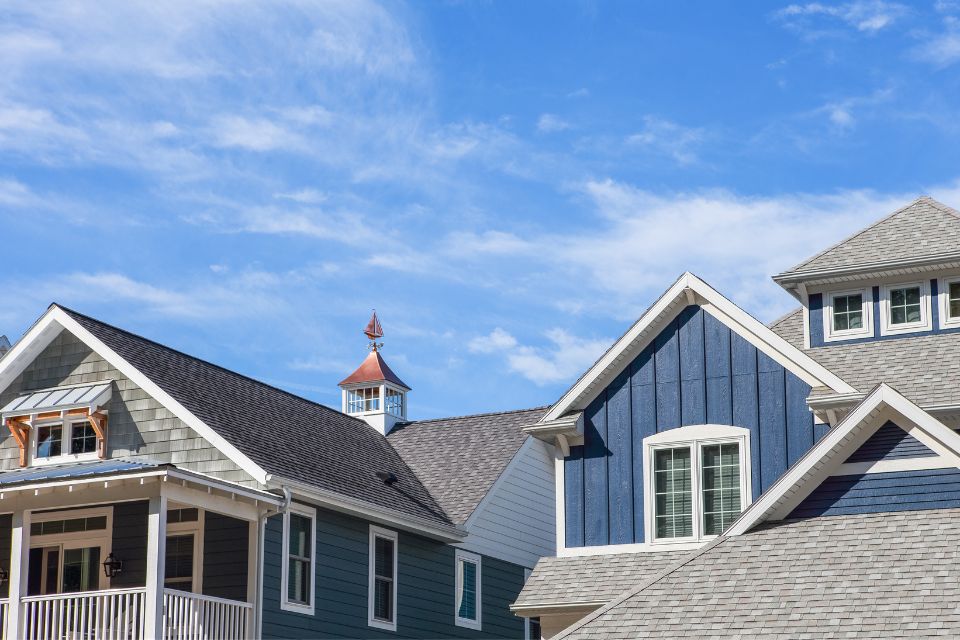Surviving Lakeland’s Storm Season: How to Prep Your Home Before the Rain Hits
If you’ve lived in Lakeland for any amount of time, you know Florida’s storm season isn’t something to take lightly. Between June and November, heavy rain, high humidity, and tropical systems can move in fast — leaving unprepared homeowners scrambling to deal with leaks, flooding, or damage that could have been prevented.
Whether you’re a longtime local or new to Polk County, understanding how to prepare your home before the storms hitcan save you thousands in repairs, protect your property value, and give you peace of mind when the weather turns wild.
Let’s break down how Lakeland homeowners can prepare, protect, and stay ahead of the next big storm.
1. Inspect Your Roof Before the Storm Does
Your roof is your home’s first line of defense — and it takes the hardest hit during Lakeland’s storm season. Even minor wear like cracked shingles, loose flashing, or clogged gutters can let water seep in once the rain starts pounding.
Scheduling a professional home inspection before storm season starts helps identify small issues before they turn into expensive leaks. An inspector can spot early signs of moisture intrusion, soft spots, and potential drainage issues that aren’t visible from the ground.
(Don’t wait for the next downpour — schedule your inspection today and protect your home from Lakeland’s unpredictable weather.)
2. Check Your Gutters and Downspouts
Gutters are one of the most overlooked systems in the home, but they play a major role in keeping water away from your foundation. In Lakeland’s tropical climate, debris like palm fronds, leaves, and moss can quickly clog your gutter system, sending water straight down your siding or pooling near your foundation.
Before storm season peaks, clean your gutters thoroughly and ensure all downspouts extend at least four feet away from your home. A quick inspection can help confirm that everything’s flowing properly — and that no areas are prone to overflow during heavy rain.
3. Secure Outdoor Areas
Storm season isn’t just about rain — it’s also about wind. High gusts can turn outdoor furniture, grills, and decor into dangerous projectiles. Take time to secure or store anything that could move or blow over in strong winds.
Also, check your trees for low-hanging or dead branches that could damage your roof, vehicles, or windows. Many Lakeland homeowners schedule a pre-storm yard check to prevent property damage long before the first storm shows up on radar.
4. Seal Up the Small Stuff
Water intrusion can happen through even the smallest cracks. Walk the perimeter of your home and check the caulking around windows, doors, vents, and exterior penetrations like cable or AC lines.
Re-caulking or sealing small gaps now can prevent water from creeping inside during heavy rains. In older Lakeland homes, this simple task can make a huge difference in keeping moisture out and air conditioning costs down during the humid season.
5. Watch for Drainage and Grading Problems
Lakeland’s sandy soil doesn’t always drain evenly — and many neighborhoods have low-lying areas that collect water fast. After a storm, take note of where water pools near your foundation, driveway, or yard. Standing water is a red flag for potential drainage issues that could lead to structural damage or slab movement over time.
A home inspection can help you identify the root cause of drainage problems and recommend solutions such as re-grading, French drains, or gutter extensions.
(Check out our inspection videos to see how our team identifies early warning signs of water damage before they become major issues.)
6. Protect Your Electrical Systems
During Lakeland’s storm season, power surges and lightning strikes are common. To protect your home’s electrical system, consider installing whole-home surge protection or at least surge protectors for high-value electronics.
Inspect your breaker panel for any corrosion or moisture signs — especially in older homes — and make sure your exterior outlets are properly covered to prevent water intrusion.
7. Don’t Forget Your Insurance Documentation
It’s not the most exciting part of storm prep, but it’s essential. Make sure you have digital and physical copies of your homeowners insurance, warranty info, and inspection reports. If your home ever suffers storm-related damage, those records can make the claims process smoother and faster.
8. The Smartest Move: Schedule a Pre-Storm Inspection
Lakeland’s storm season can be unpredictable — but your home’s safety shouldn’t be. Scheduling a pre-storm inspectionensures that every vulnerable system (roof, drainage, structure, and electrical) is evaluated before the rain hits.
Inspectors use tools like thermal imaging to find hidden leaks and moisture pockets behind walls, ceilings, and floors — long before they become visible. Catching these early not only prevents damage but also maintains your home’s value year-round.
(Ready to protect your property before the next storm? Find your Lakeland home and see why thousands of local buyers and homeowners trust our inspections to keep them safe.)
Lakeland’s rainy season is part of life in Central Florida — but it doesn’t have to mean constant worry. A few preventative steps today can save you thousands tomorrow.
From inspecting your roof and clearing gutters to sealing cracks and checking drainage, preparation is the key to peace of mind. When you combine that with a professional home inspection, you’re not just reacting to storms — you’re staying one step ahead of them.
So before the next dark cloud rolls in, take action. Schedule your inspection, secure your home, and enjoy the rainy season knowing you’re fully protected.
![]()

